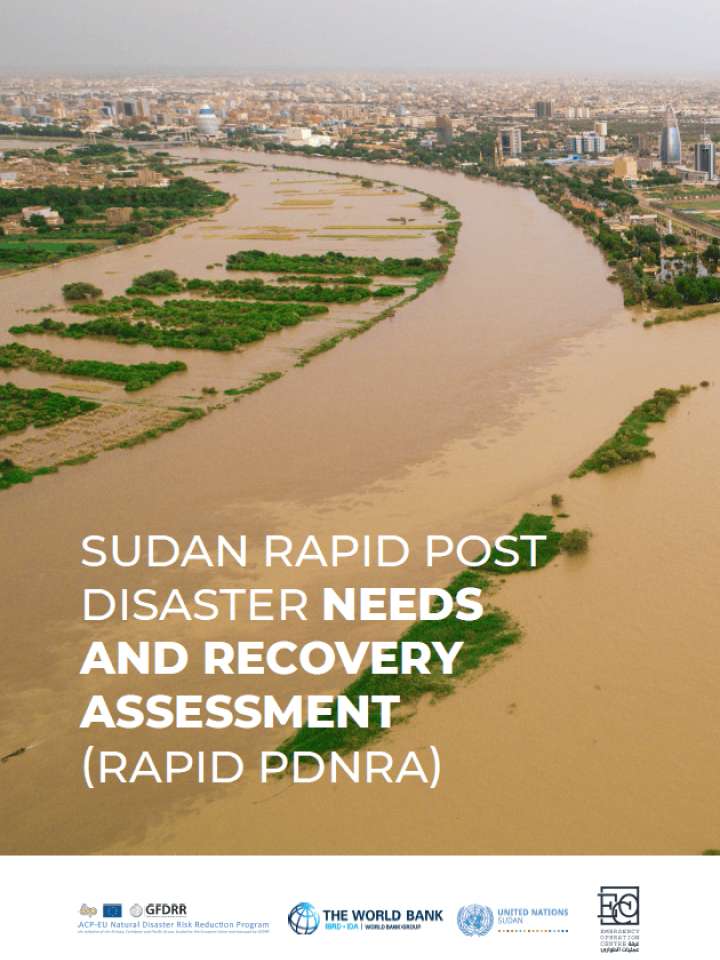Sudan Rapid Post Disaster Needs and Recovery Assessment 2021
This rapid assessment outlines key actions needed for recovery from the 2020 floods in Sudan. The report documents the immense scale and damage of the floods and highlights the importance of preparedness to reduce the impacts and damages of future floods. In 2020, after months of unusually heavy rains across Central and North-Eastern Africa, Sudan was affected by the worst flooding in over three decades. Significant impacts of flooding started in mid-July 2020 when heavy rains and flash floods affected three internally displaced people’s camps in Nyala Town, South Darfur state. By August 12, the number of people affected had exceeded 185,000 with all states except Central Darfur being affected. The situation continued to worsen in the second half of August with the affected population reaching 506,000 by the end of the first week of September and peaking at 875,000 by the end of September.
The objective of this RPDNRA is to assess the extent of the flood impact on Sudan and, on the basis of these findings, to produce an actionable and sustainable Recovery Strategy for leveraging targeted flood response and recovery policy/planning, including mobilizing financial and technical resources. The assessment specifically sets out to: (i) support country-led assessments and initiate recovery planning processes through a coordinated inter-institutional approach; (ii) evaluate the impact of the floods on infrastructure and assets, service delivery, governance and social processes; (iii)assess needs to address underlying risks and vulnerabilities so as to reduce risk and build back better; (iii) estimate the damage and losses caused by the floods; (iv) identify recovery and reconstruction needs; (v) develop a recovery strategy; and (vi) provide the basis for mobilizing resources for recovery and reconstruction through local, national and international sources.
The RPNRA has been adapted from the Post Disaster Needs Assessment (PDNA) methodology to the wider development context of Sudan in a manner to undertake a rapid and concise assessment that links to the existing needs assessments and informs the development agenda in the
country.
This report is available in both English and Arabic.
Explore further
